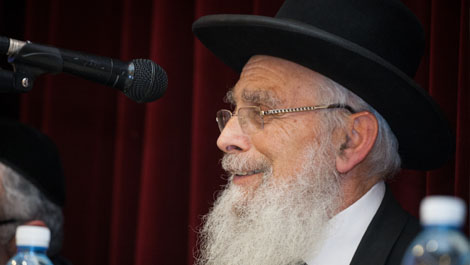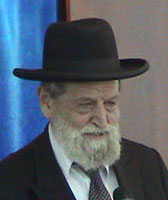Beit Midrash
- Sections
- Peninei Halakha
- Shabbat and Holidays
- The Three Weeks
- The 17th of Tamuz
The Sages state in the Mishna:
Five tragic events befell our forefathers on the seventeenth of Tamuz: the Tablets [containing the Ten Commandments] were shattered; the [daily] Tamid offering was terminated; the city of Jerusalem was breached; and Apostomus burned a Torah scroll; and placed an idol in the Temple. (Ta’anit 26a-b)
The first event was that the Tablets were broken. After the revelation at Mount Sinai, when the people of Israel accepted the Torah, Moshe remained atop the mountain for forty days and forty nights, where he learned Torah directly from God. When he descended the mountain carrying the Tablets of the Covenant, which were engraved with the Ten Commandments, he saw that a golden calf had been fashioned, and some of the people were straying after it. He immediately became physically weak and broke the Tablets. Thus, not only were the Tablets broken on the seventeenth of Tamuz, but the sin of the Golden Calf occurred on that day as well.
The second event was that the Tamid offering was terminated. The Tamid was the most important offering brought in the Temple. Its importance stems from its consistency: They would bring the Tamid offering twice a day, every day, once in the morning and once in the afternoon. Even during the first Roman siege of Jerusalem, the Romans supplied the Jews with lambs to be used for the Tamid offering. This continued until the sixteenth of Tamuz. The seventeenth of Tamuz was the first day on which the offering was not brought (see bk 82a).
The third event is that Jerusalem’s walls were breached. The fourth event is that Apostomus, a Roman officer, burned a Torah scroll.
The fifth event is that an idol was placed in the Holy Temple. Some say that this event took place in the First Temple era and was perpetrated by King Menasheh. Others say that it took place in the Second Temple era, and that the perpetrator was the wicked Apostomus (y. Ta’anit 4:5).
However, the event that ultimately prompted the establishment of a fast day was the breach of Jerusalem’s walls. The Romans besieged the city for three years, yet they were unable to conquer it. Finally, because of baseless hatred and infighting among the Jews, the city’s defenders grew weak, and the Romans prevailed. On the seventeenth of Tamuz, they succeeded in breaking through the walls of Jerusalem and penetrating inward. Practically speaking, once the city was breached, the campaign was lost. Battles continued to rage in Jerusalem for another three weeks, but in the end, the Romans conquered the Temple Mount and burned down the Second Temple on the ninth of Av, thus beginning the long period of our exile.[2]
If we look closely at the matter, we will see that there is an inner connection between the five tragedies that occurred on the seventeenth of Tamuz. Each one manifests a crisis that first affects spiritual roots, then pierces the wall of faith, and finally causes severe damage that, if not repaired promptly, will lead to total destruction, as symbolized by Tisha Be-Av. The sin of the Golden Calf was not outright heresy. The people still believed in God as the Creator of the world, but they believed that the Calf had certain powers as well. Once they began with their strange forms of worship, however, they no longer had the fortitude to resist the bad report later brought by the spies, and they rebelled against God and His servant Moshe. Thus, they violated the purpose for which the nation of Israel was created – the revelation of the divine Presence in this world – in the very land that was dedicated to this purpose, Eretz Yisrael. The same is true of the termination of the Tamid offering, the placement of an idol in the Temple, and the burning of the Torah. None of these events alone entailed complete destruction, but they represent fundamental spiritual damage that, if left unrepaired, will grow worse and worse, leading eventually to total destruction.
[2] See the previous note regarding the breach of Jerusalem’s walls during the First Temple period, which the verse says occurred on the ninth of Tamuz, and the reason we fast on the day it happened during the Second Temple period.





















